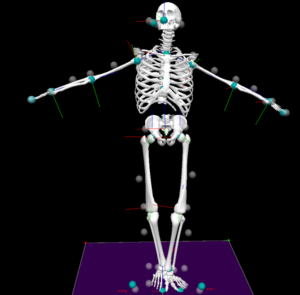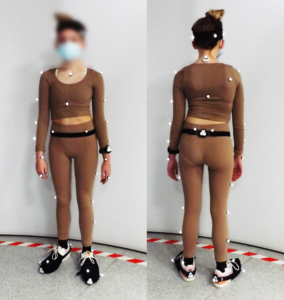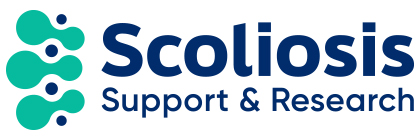Fraje Watson, research assistant, division of surgery & interventional science, University College London
Researchers from University College London (UCL) and the Royal National Orthopaedic Hospital (RNOH), Ms Fraje Watson, Professor Rui Loureiro, and Mr Julian Leong, have been investigating balance in children with adolescent idiopathic scoliosis (AIS).
Many researchers are interested in how children with AIS move, either in comparison with typically developing children, between different curve types, or in response to treatment such as spinal fusion surgery. Movement research is important to help us understand how scoliosis starts, how it develops, and how it responds to treatment, and to help clinicians monitor patients over time.
A review of existing research on movement in children with AIS suggests that measurement of balance provided strong and consistent information about them However, most of this research was on standing balance only, and not walking balance. Fraje uses the Motor Learning Laboratory at the RNOH, where the movement of each part of the body can be analysed, to measure balance during walking. Using these data, she calculates the Margin of Stability (MoS) to measure walking balance. The MoS is commonly used to monitor balance in lots of other musculoskeletal populations. Walking balance is important because it is used continuously throughout daily life.
Fraje’s research asks three overall questions: (1) is the MoS different between children with AIS and children developing normally, (2) could it be measured using a wearable device, and (3) does it change with increasing curve magnitude? This research will help us find out whether the MoS could be a useful means to help clinicians detect and monitor children with AIS in the future. Additional monitoring information like this could help to reduce the number or frequency of X-rays needed to monitor a patient. If the MoS can be measured with a wearable device, then patients could record data at home in their usual environment, and benefit from telemedicine monitoring, reducing necessary trips to their hospital.
Data for this research are collected at the RNOH Motor Learning Laboratory. This laboratory contains a Gait Real-time Analysis Interactive Laboratory (GRAIL) with a dual-belt instrumented treadmill, surrounded by ten motion capture cameras. During motion capture gait analysis, participants wear lots of small reflective markers on their skin. The movement of these markers is recorded by the motion capture cameras. The position of these markers can be used to generate a computer model of each participant used to calculate the MoS. Motion capture gait analysis is used at the RNOH for lots of reasons such as assessment, research, and rehabilitation. Worldwide, motion capture technology is used in musculoskeletal medicine, for professional sports analysis, and in film industries to capture actor movement and facial expressions before they are converted to Computer Generated Imagery (more commonly known as CGI).


Fraje’s research also measures movement data using a wearable device system and app called Notch. Each Notch is an Inertial Measurement Unit (IMU) that includes a tiny accelerometer, gyroscope, and magnetometer. Smart phones contain similar sensors, which is how they know if they’re upside down, or allow them to be used to steer a car on Mario Kart! The Notch is connected to an app that calculates the movement. For this research, participants wear seven Notchs in total: three on each foot, and one at the base of the spine. To see if we can use the Notchs to measure the MoS of children with AIS, we compare results from them to the motion capture data (which is the gold-standard).
So far, this research has shown that the MoS is different in children with AIS and children developing normally in the forward-backward and side-to-side direction. This means the MoS could be used as a marker of AIS. Additionally, the MoS changes as the spinal curve gets bigger which means it might be good at monitoring curve progression or response to treatment. The Notch wearable devices are able to measure the side-to-side MoS reliably and we hope with further research and development, they will be able to reliably measure the forward-backward MoS too.
Recently, three online focus groups were advertised on the SAUK social media accounts. These sessions were intended to build upon the work started by the James Lind Alliance Priority Setting Partnership by focusing on children with AIS. The sessions were organised so that young people with AIS could discuss their ideas and priorities for research into children like themselves. These types of session (formally known as Patient and Public Involvement) provide opportunities for patients (and their families or carers, etc.) to be involved in generating ideas, providing feedback, planning, managing, and designing research. Each session had a theme (technology, screening, and conservative management), and the outcomes will be used to guide further applications for research funding and direction.
This kind of research and Patient and Public Involvement doesn’t happen without patients volunteering their time to take part. We would like to extend special thanks to all the children (and their parents) who took part in our study and focus groups because we sincerely couldn’t have done it without you. We’d also like to thank Matt, Olivia, and Roisin from the RNOH Motor Learning Laboratory and the British Scoliosis Research Foundation for the funding that enabled this research.
